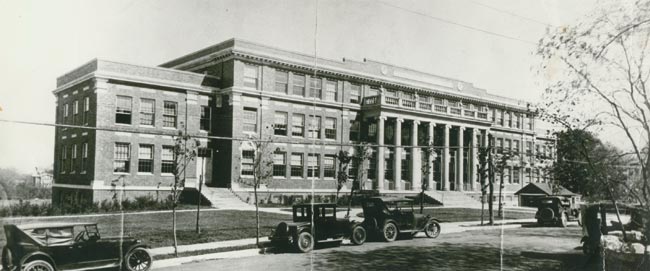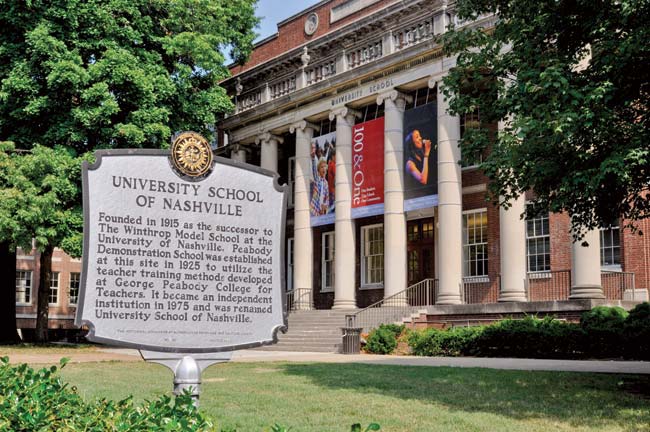
As University School of Nashville celebrates its centennial anniversary, Headmaster Vince Durnan leans back in his chair, reflects on the school’s history and says, “We will never do anything bolder than the people who started this school did.”
The roots of USN were planted in 1914 when Thomas Alexander, a doctoral student and education visionary, asked for and received permission to begin the Peabody Demonstration School in the basement of the Jesup Psychology Laboratory Building on the verdant campus of George Peabody College for Teachers.
He foresaw PDS as an exemplar of best teaching practices, a place for future practitioners to witness great teaching and student learning in real time. “We are going to create a school to surpass all others,” Alexander declared.
“Which, coming from a 20-something-year-old grad student in a basement in Nashville, Tennessee, was an outrageously bold thing to say,” Durnan muses.
They were fighting for an educational ideal.”
—USN Headmaster Vince Durnan
That first year, PDS drew 100 children from the public schools into a curriculum intended to prepare them for “the duties of life.”
Ten years later, Peabody President Bruce Payne received a $620,000 grant from the Rockefeller Education Foundation to build a beautiful standalone school across the lawn on Edgehill Avenue. Over the next 50 years, PDS became renowned in Nashville for its openness to new ideas, academic rigor, faculty autonomy, and its willingness to accept children from diverse racial and ethnic backgrounds.
In 1964, PDS was one of the first schools in Nashville to integrate fully. While Nashville public schools planned to slow-walk through desegregation—a grade at a time beginning with kindergarten, which would take 13 years—PDS desegregated top to bottom in one year. Minority students were included in all programs, clubs and sports and welcomed to attend the junior-senior prom.
By the 1970s Peabody College was suffering through terminal financial decline. On the first day of registration in 1974, Peabody’s administrators told PDS faculty and staff they’d all be laid off at the end of the second semester.
However, Peabody miscalculated the willingness of PDS families to quietly go away. Eight hundred people showed up in the school auditorium to brainstorm about how to keep the doors open. After months of negotiations, with some families putting their homes up as collateral, a purchase agreement was struck. “Peabody sold the school lock, stock and barrel—chalkboards, erasers, books, chairs and desks—for $1.5 million,” Durnan says. “And you have to remember this was the 1970s—parents had borrowed the money at 18 percent interest.”

Students voted on a new school name, ultimately choosing University School of Nashville. Although the physical facility was suffering from years of benign neglect that would prove costly to remedy, the families were desperate to save their school.
“They were fighting for an educational ideal,” Durnan says. “It was a broad willingness to treat childhood as a gift and not an ailment—a mindset where you celebrate what’s happening in the mind and the life of a child. They prized the opportunity to do something of deeper meaning, which ties directly to the Peabody culture.”
University School of Nashville is now considered one of the premier private K-12 college-prep schools in the country. Of its current 1,050 enrollees, 30 percent are students of color and 20 percent of the student body comes from international families, representing 49 different countries.
Durnan gazes across Edgehill Avenue, where an underground steam pipe still physically connects USN to Peabody College. “Today we lean on that history,” he says. “There’s so much inspiration to be found in the amazing things people did generations ago.”